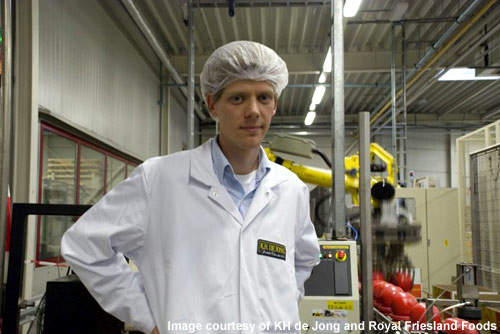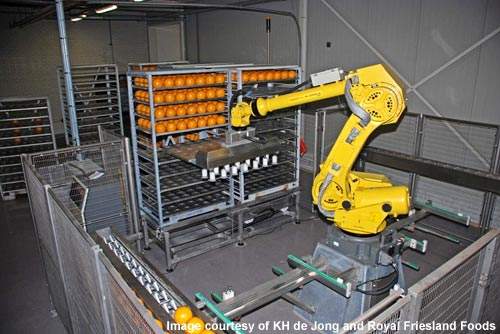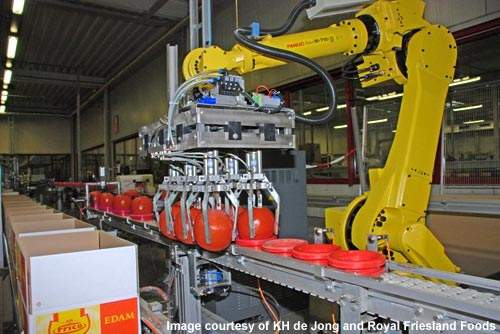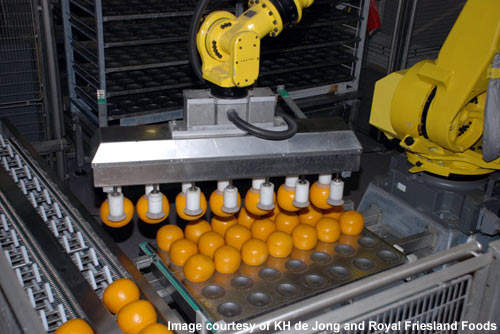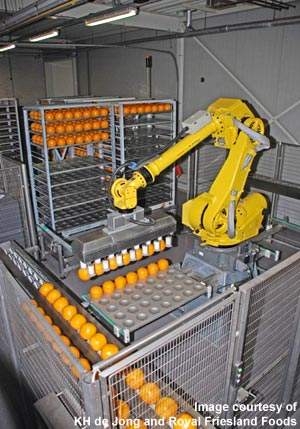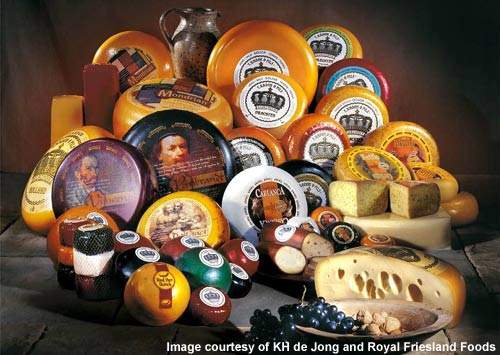Royal Friesland Foods is a Dutch-based dairy company with interests across Western and Central Europe, West Africa and South East Asia. The company’s cheese division, Friesland Foods Cheese, is one of the oldest cheese producers in the Netherlands, producing 350,000t per year of various cheeses.
The company was founded in 1879 and currently employs more than 18,000 personnel. Following the company’s 125th anniversary in 2004, the company was granted the royal charter from Queen Beatrix of the Netherlands.
CHEESE PACKAGING
In February 2008, Friesland Foods Cheese decided to increase the efficiency of its cheese packaging operation at its Friesland’s KH de Jong facility in Wolvega by installing robot systems across three packaging lines.
SYSTEM
Over 350t of Edam is produced per week at the Wolvega facility and packaged in three different sizes: 1.9kg, 1.7kg and 0.9kg. The naked cheese arrives at the packaging facility in transportation trays and racks before maturing prior to packaging.
Each tray can hold 35 cheeses, with ten trays in each rack. At the end of the maturing process the rack of cheese is transported to the buffering area at the start of the packaging line. The buffering area can hold five full and five empty racks, which are cycled through to the depalletising area, where the robot system takes over.
A Fanuc Robotics R-2000iB takes a full tray (five lines of seven cheeses) from the rack and transfers a line of seven cheeses using vacuum cups onto a conveyor. The cheeses are accurately placed prior to their depalletising as they go into the wax coating machine. The robot can detect problems with trays which could cause problems in the automation.
The robot system is able to use sensors to determine if all the cheeses have been picked up for placement.
One of the problems is that the cheeses are not a uniform ball-like shape and in order to make sure the robot picks up a full complement of cheese it uses a wrist roll motion, making sure that the cheese does not stick to the tray.
After wax coating, cellophane wrapping and labelling the packaging line conveyor moves the cheese to be packed in boxes prior to palletisation and transportation.
MORE ROBOTS
At the end of the conveyor a M-710Icrobot, which is equipped with a pneumatically operated six-finger gripper, packs the cheeses. This robot can pick up three cheeses at a time and then rotate the gripper through 180 degrees to pick another three cheeses before placing the six in a box. The full boxes are then transported to a palletising robot the FANUC Robotics M-410i at the end of the line.
ADVANTAGES
Productivity on the three production lines at KH de Jong has increased by 10% since the introduction of the robots. The maximum capacity of the facility is now 3,600 cheeses per hour, per line. The labour savings due to the introduction of the robots comes to around 500 hours per week over two shifts. The new system has also improved hygiene as the cheese is no longer handled by human workers.

